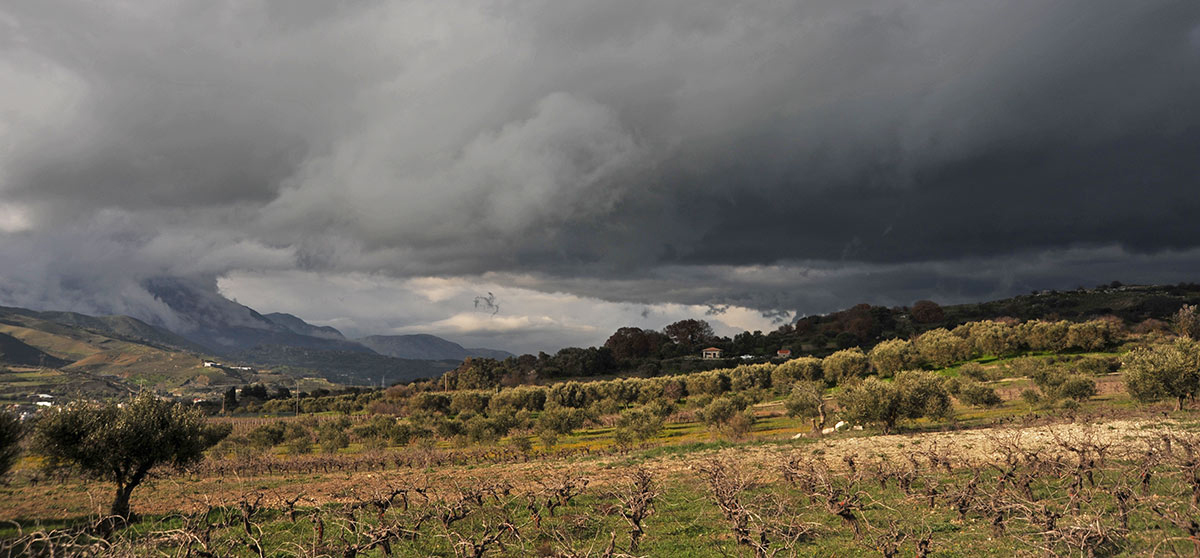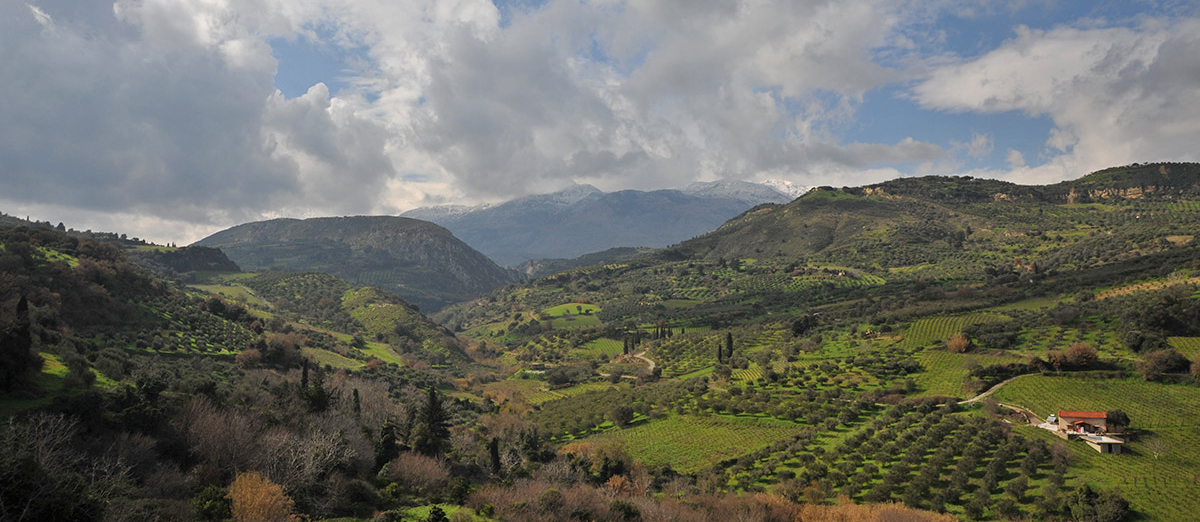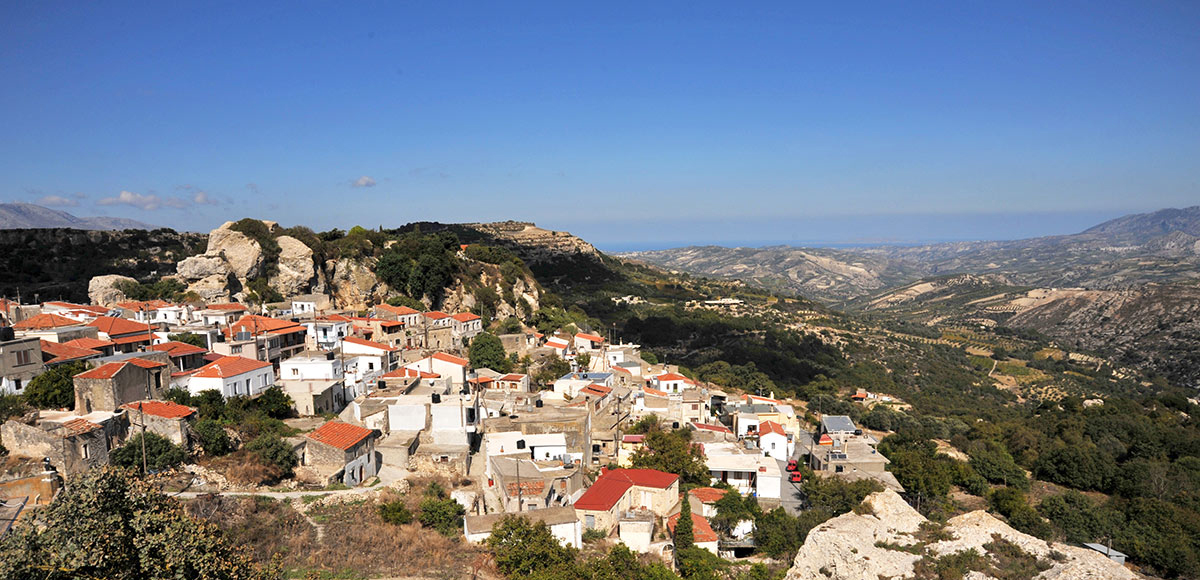The “wine roads” of the Heraklion Prefecture lead visitors to age-old vineyards, historical villages, old monasteries, antiquities, contemporary cultural sites, as well as wine factories that are open to the public.
Houdetsi (1) is well hidden on the slope of a beautiful valley. South of the village a hilly landscape with vast vineyards opens up towards the south of the inland area of the Prefecture of Heraklion.
Houdetsi - Metaxochori - Made - Voria

Following the main road south of the village of Houdétsi, we stop at the Epanosίfi Monastery , one of the richest and largest monasteries of Crete; in the museum one can see rare manuscripts of the 18th century, icons and various holy relics.
We continue towards the villages Metaxohori, Haraki, Made, Melidohori and Voria (2), which have recently begun to play significant roles in the wine production of the area.
Houdetsi - Profitis Ilias - Venerato
A little to the south of Houdetsi, we can take a road that passes through a hilly area thick in vineyards, in a westerly direction, and then end up at the village of Profitis Ilias (3), where the remains of a Byzantine castle, built by Nicephorus Phocas (Byzantine Emperor, 10th century AD) survive today.
Continuing in a south-westerly direction, through hillsides covered in vineyards, and having crossed the villages Kiparissos and Pirgos, we end up deep into a beautiful valley with vineyards.
At the western exit of the valley, we come to the second biggest wine producing region of Crete, with the village of Dafnes (5) as the epicentre. The area has a long tradition of cultivating select varieties for wine making.
Venerato (4), the first village we reach, is built on the western slope of a small gorge.
At the entrance to the village, in a landscaped area, one can see sculptures made of porous rock; they are left by artists who come here from all over the world, in order to attend an international sculpture symposium that is held here every year.
Opposite Venerato, on the eastern slope, there is the very old Paliani Monastery, , which has been in existence since the first centuries of the Byzantine State era. South of the main church there is a centuries-old Myrtle tree for which a celebration is held on September 23rd, a festivity of tree worship which has survived since the Minoan years.
Venerato - Siva - Dafnes - Heraklion

In a short distance north of Venerato, we reach the villages Siva and Dafnes, which have a long wine making tradition. Here, a very popular Wine Festival is held every summer; during the festivities wine is available in abundance for free, and visitors can enjoy themselves listening to live Cretan music.
After Dafnes (5), having passed through a hilly landscape north of the village, we end up deep in a valley; the road which runs along it leads us back to Heraklion, in the area of Estavromenos.
Venerato - Avgeniki - Agios Thomas
South of Venerato there are the villages Avgeniki and Agios Thomas (6), which are surrounded by a particularly beautiful rural landscape, formed by ancient vineyards and olive groves that can be seen on the hillsides. South-west, in the distance, the rocky hill of Patela, near the village of Prinias dominates, on which the ruins of ancient Rizinia are located.
For those who wish to get acquainted with more wine making areas of the inland Heraklion region, there are alternative choices.

From the area of Dafnes, one can take the road which leads south, to the valley of Messara and to the area of Ancient Gortyna, the capital of Roman Crete; there, in the hilly landscape around the village of Plouti (7) and of Lavirinthos cave an exceptional traditional vineyard stretches out.
In Ancient Gortyna, the so-called law Code of Gortyn was found, which is the oldest legislative text of Greece; it consists of 12 stone slabs on which rules about the cultivation of vines are engraved.
























